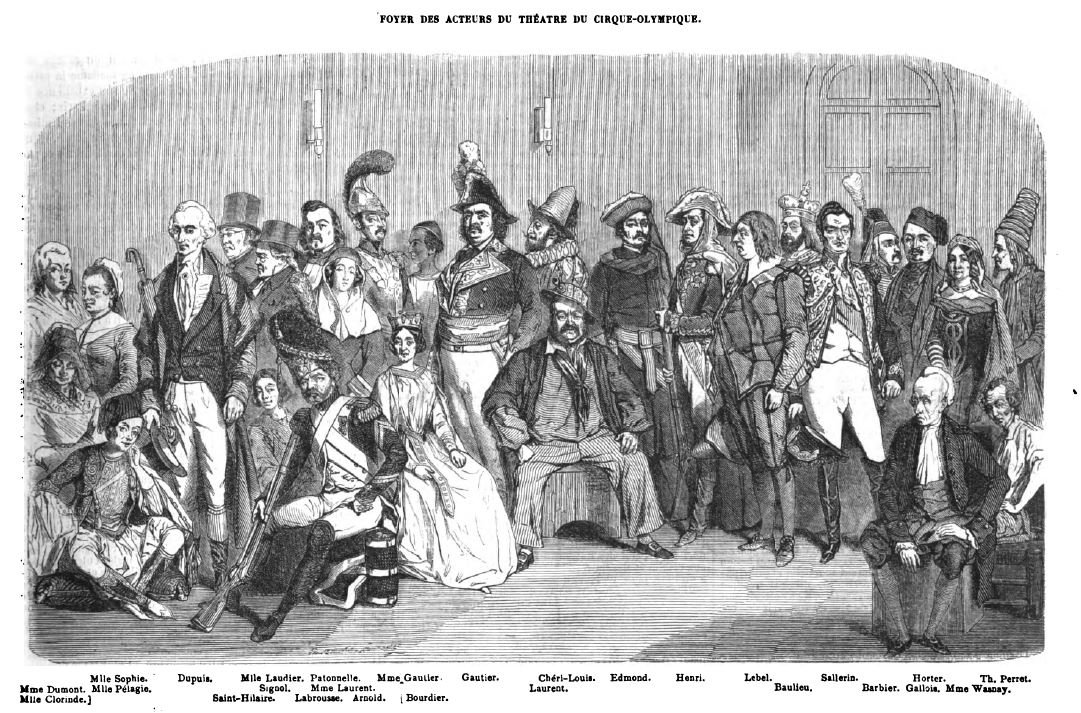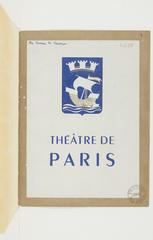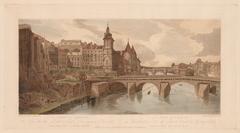
Théâtre de Paris Visiting Hours, Tickets, and Paris Historical Sites Guide
Date: 14/06/2025
Introduction: The Enduring Legacy of Théâtre de Paris
Located in the heart of Paris’s 9th arrondissement, the Théâtre de Paris is a celebrated emblem of French theatrical tradition and architectural splendor. With origins stretching back to the 18th century and a heritage shaped by luminaries like Sarah Bernhardt, this venue encapsulates the evolution of Parisian performing arts. Today, it continues to captivate audiences with a rich program of classic and contemporary productions, while offering visitors a unique experience that blends historical grandeur with modern comfort and accessibility.
Whether you are a culture enthusiast, architecture lover, or first-time Paris traveler, this guide provides comprehensive details on visiting hours, ticketing, accessibility, and nearby attractions. Discover how to make the most of your visit to this iconic Parisian landmark (Wikipedia, Théâtre de Paris Official Website, Sortir à Paris).
Table of Contents
- Introduction: The Enduring Legacy of Théâtre de Paris
- Historical Overview: Foundation to the Present
- Architectural Highlights
- Technical Modernization and Accessibility
- Visiting Théâtre de Paris: Practical Information
- Special Events and Guided Tours
- Nearby Attractions
- Visitor Experience: Tips and Recommendations
- FAQs
- Conclusion and Next Steps
- References
1. Historical Overview: Foundation to the Present
Early Foundations
The Théâtre de Paris occupies a site with theatrical roots dating to the 18th century. Initially constructed in 1730 by the Duke of Richelieu, it was later named Folie-Richelieu, reflecting the era’s affinity for pleasure gardens and artistic leisure (Wikipedia). During the First Empire, Fortunée Hamelin, a prominent Merveilleuse, managed the venue, intertwining its fate with Paris’s evolving social scene.
19th-Century Evolution
The 19th century brought significant architectural and cultural transformation, mirroring Paris’s broader urban renewal under Baron Haussmann. The theatre adopted neoclassical and Beaux-Arts elements, signifying the democratization of the arts and the city’s growing cultural ambition (Theatre de la Ville History).
The Sarah Bernhardt Era
In 1899, the legendary Sarah Bernhardt acquired the theatre, leading a comprehensive renovation. She modernized the stage, improved sightlines, and installed electric lighting, all while preserving the historic façade. These updates allowed for greater artistic innovation and comfort (Theatre de la Ville History).
20th Century and Beyond
The theatre flourished in the 20th century, embracing musicals and operettas. The creation of the Petit Théâtre de Paris (Salle Réjane), a 300-seat space carved from former costume workshops, enabled more intimate and experimental productions (Wikipedia).
2. Architectural Highlights
Façade and Interior
The main façade, with its grand columns, ornate stonework, and ironwork marquee, is a striking example of Parisian Belle Époque architecture (Wikipedia). Inside, the horseshoe-shaped auditorium dazzles with gilded moldings and plush red velvet seating. The Petit Théâtre offers a contemporary, modular design ideal for innovative performances (Theatre de la Ville History).
3. Technical Modernization and Accessibility
The Théâtre de Paris is equipped with advanced lighting, sound, and stage technology, supporting a wide range of productions. Accessibility is a priority: wheelchair access, designated seating, and updated amenities ensure all visitors can enjoy the experience (Wikipedia).
4. Visiting Théâtre de Paris: Practical Information
Location and Getting There
- Address: 15, rue Blanche, 75009 Paris
- Metro: Blanche (Line 2), Trinité-d’Estienne d’Orves (Line 12)
- Bus: Several lines serve the area.
- Bicycle: Vélib’ stations nearby.
- Parking: INDIGO parking facility close by (Théâtre de Paris).
Visiting Hours
- Box Office: Generally open from 11:00 AM to 7:00 PM; open until the start of each performance.
- Theatre Doors: Open 30–45 minutes before showtime (Théâtre de Paris).
Ticketing
- Online: Book via the official website or trusted platforms. Early booking is advised.
- Phone: +33 1 86 47 72 49 (Mon–Fri, 10:00–18:00).
- Onsite: Purchase at the box office until showtime.
- Pricing: Varies by show and seat; discounts for students, seniors, and groups.
Accessibility
- Wheelchair Access: Dedicated seating areas and entrances.
- Assistance: Contact in advance for special arrangements (Théâtre de Paris).
Amenities
- Cloakroom: Available for coats, umbrellas, small bags, and helmets. No storage for large items or suitcases.
- Bar: Pre-show and intermission drinks and snacks (Theatre in Paris).
- Nearby Dining: Numerous bistros and cafés in the neighborhood. Reservations recommended for pre-show meals.
5. Special Events and Guided Tours
The theatre hosts premieres, festivals, and seasonal events. Guided tours—offering backstage and architectural insights—are available by advance reservation via the official website (Théâtre de Paris).
6. Nearby Attractions
- Moulin Rouge: World-famous cabaret.
- Musée de la Vie Romantique: Charming museum dedicated to the Romantic era.
- Montmartre & Pigalle: Historic districts for nightlife and exploration.
- Opéra Garnier and Musée Grévin: Iconic Parisian landmarks.
7. Visitor Experience: Tips and Recommendations
- Dress Code: Smart-casual is customary; avoid overly casual attire (Theatre in Paris).
- Etiquette: Silence phones, avoid photography during shows, and applaud at appropriate moments.
- Language: Most shows are in French, but select performances offer English surtitles.
- Advance Booking: Popular productions sell out quickly, especially during peak tourist seasons.
- Arrive Early: Allow time for security checks, cloakroom, and finding your seat.
- Accessibility: Inform staff of any mobility needs in advance for a smooth visit.
8. FAQs
Q: What are the visiting hours?
A: Box office is open 11:00 AM–7:00 PM; doors open 30–45 minutes before showtime.
Q: How do I buy tickets?
A: Online, by phone, or in person at the box office (Théâtre de Paris).
Q: Is the theatre accessible?
A: Yes, with dedicated facilities for visitors with reduced mobility.
Q: Are guided tours available?
A: Yes, by reservation through the official website.
Q: Are there English surtitles?
A: Select shows offer English surtitles—check during booking.
9. Conclusion and Next Steps
The Théâtre de Paris masterfully bridges historical legacy and contemporary creativity. Its accessible location, rich programming, and thoughtful visitor amenities make it a cornerstone of Parisian cultural life. For an unforgettable evening, plan your visit by consulting the official website, booking tickets in advance, and exploring the vibrant 9th arrondissement for a complete Paris experience.
Download the Audiala app for seamless ticketing, event updates, and exclusive cultural recommendations.
10. References
- Wikipedia
- Théâtre de Paris Official Website
- Sortir à Paris
- Theatre de la Ville History
- Paris Tourist Information
- Theatre in Paris






































































































































































































































